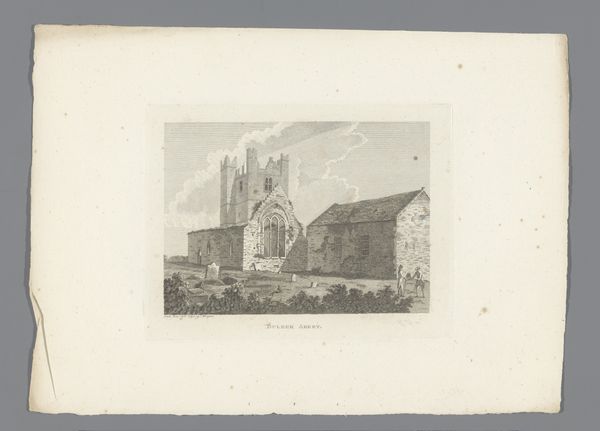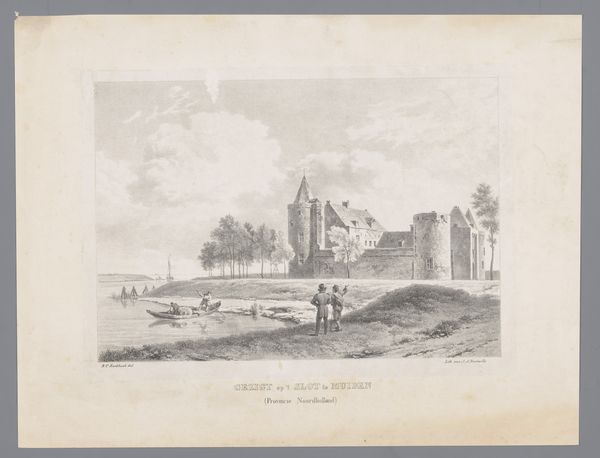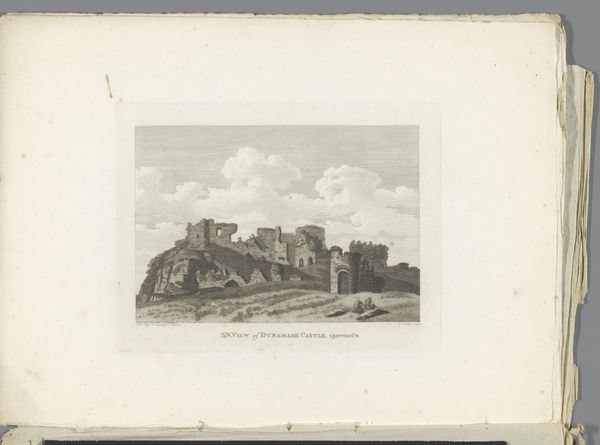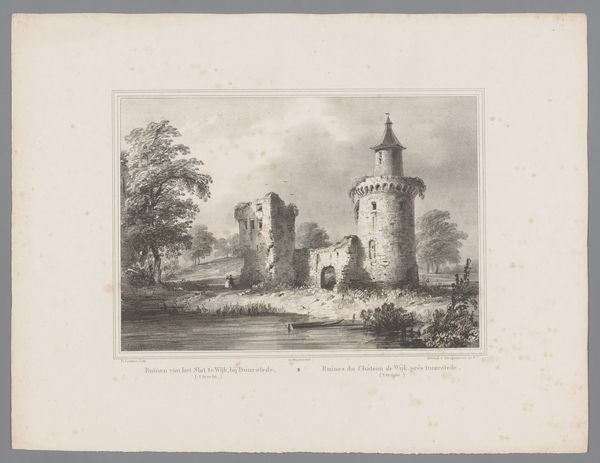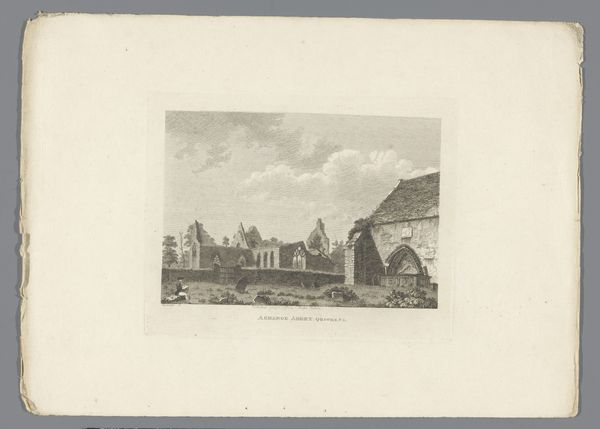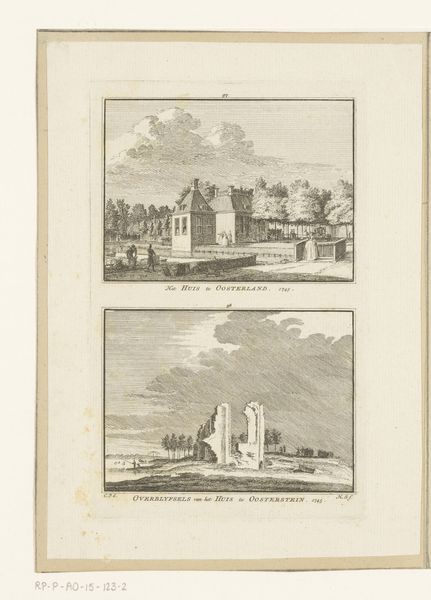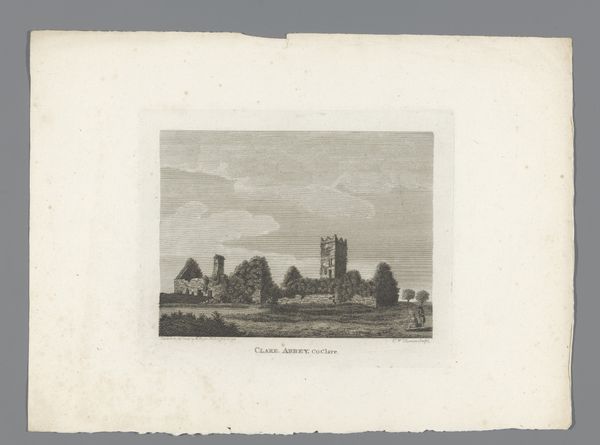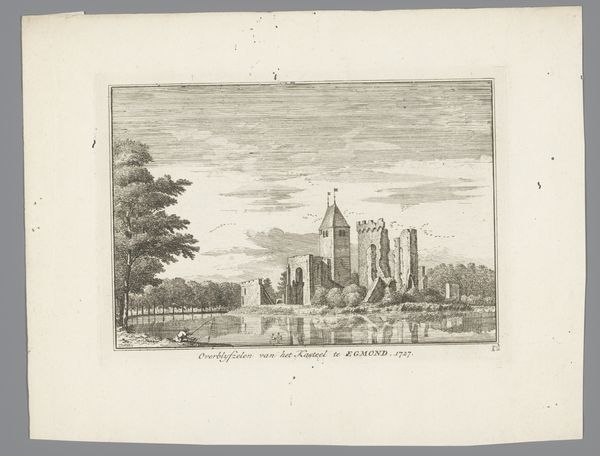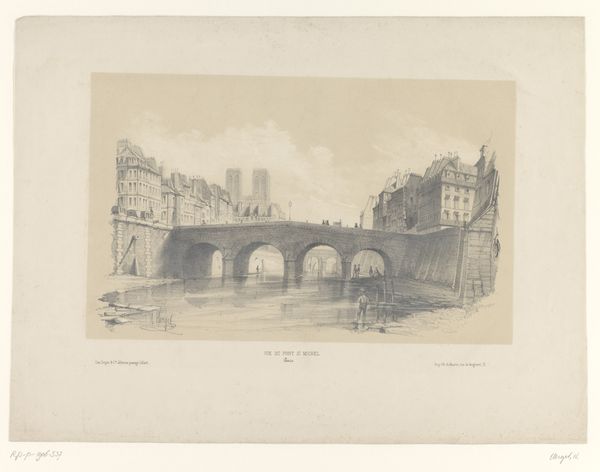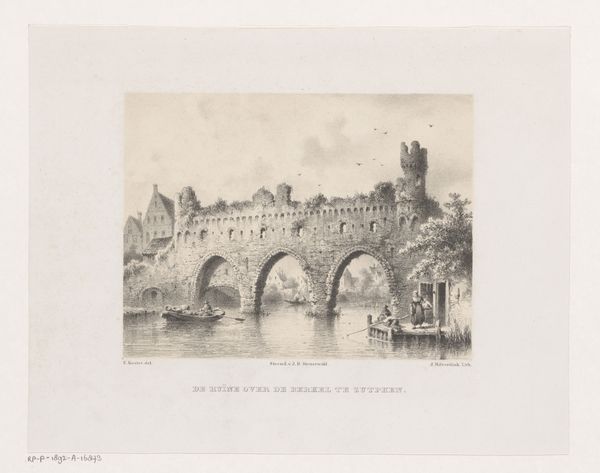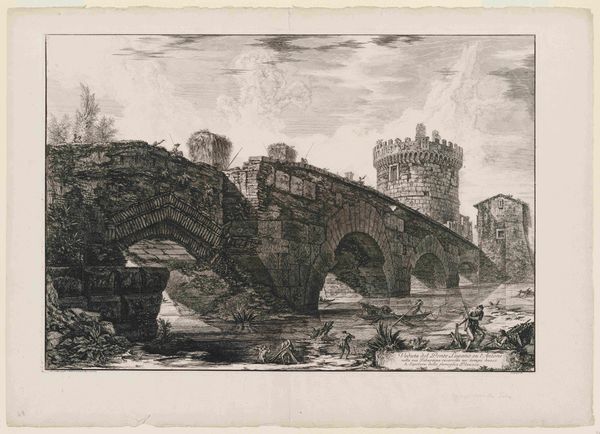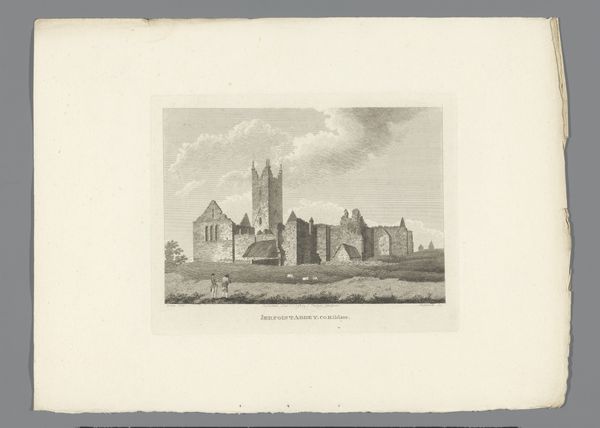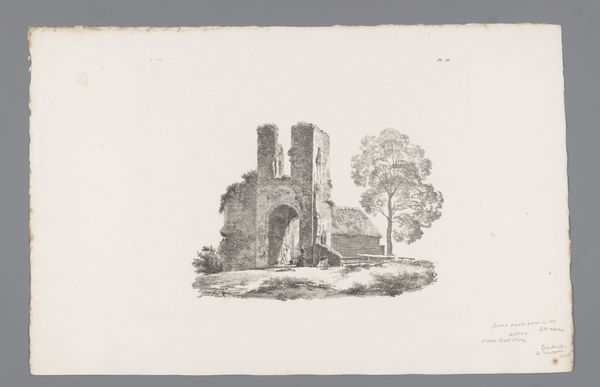
print, engraving
#
neoclacissism
# print
#
landscape
#
cityscape
#
watercolour illustration
#
engraving
Dimensions: height 156 mm, width 198 mm
Copyright: Rijks Museum: Open Domain
Curator: Looking at this delicate engraving, "Gezicht op Leighlin Bridge vanuit het zuidwesten gezien"—or "View of Leighlin Bridge from the Southwest"—likely created between 1794 and 1797 by James Newton, I feel this immediate sense of calm melancholy wash over me. Don't you? Editor: Absolutely, a stillness permeates the piece. Yet, within that apparent calm, I see a very particular vision of power at play—both literally and symbolically constructed in this landscape. The imposing stone structures loom with a very real weight. Curator: Power, yes! The imposing structure, the subtle light... It feels like a stage set. And the bridge, with its arches mirrored in the water, creates such a hypnotic symmetry. What do you think Newton was trying to capture? Editor: Beyond aesthetic appeal, the image gestures towards something more complicated than sheer admiration. Look at the state of the tower: partially ruined, which suggests shifting powers. It is about more than just a cityscape: perhaps it is about the legacies of colonialism in Ireland and England and the constant visual reminder of control. Curator: The decay. It does have that feeling that nature will always have the final word. Do you think people living back then were aware of it or are we assigning too much context here, after the fact? Editor: It’s impossible to know definitively, but I think they understood these structures weren’t timeless. These weren't celebrations of permanence. Prints like these often served as visual reminders of political dominance. The picturesque—like this work— often sanitized complicated colonial realities into something palatable. Curator: So, maybe more loaded than it first seems, then? What a neat subversion—like whispering subversive ideas behind a pretty scene. That's lovely! Editor: Exactly. Images, especially ones circulated so widely through printmaking, played a vital role in shaping societal perceptions and even reinforcing colonial power structures. Recognizing that layers meaning to the seemingly innocuous. Curator: I will never be able to see one of these landscapes the same again! Editor: That's the intention. Once you start seeing art through an intersectional lens, it completely transforms your relationship to it and invites us to actively resist passive looking!
Comments
No comments
Be the first to comment and join the conversation on the ultimate creative platform.
